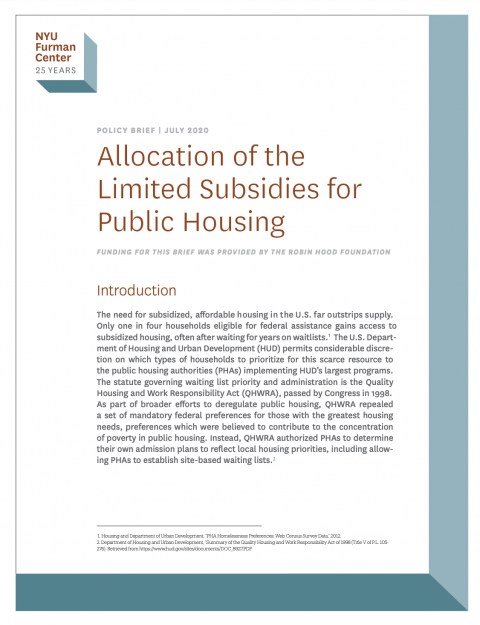Publication
Allocation of the Limited Subsidies for Public Housing

Using publicly available data on eligible and renter households for three jurisdictions, researchers developed a waitlist model that accounts for the available supply of public housing units and the decisions of applicants. Using the estimated model, researchers ran policy simulations to predict how alternative priority systems will affect who does and does not gain access to public housing, as well as their exposure to poverty concentration in neighborhoods and within public housing developments in Cambridge, MA; Detroit, MI; and Phoenix, AZ. The results demonstrate the limits of preference categories to change the allocation of units between different types of households (i.e. families, non-disabled elderly, and disabled). Income-based preferences are far more effective in changing the concentration of poverty within developments and, in certain conditions, exposure to poverty at the neighborhood level.


